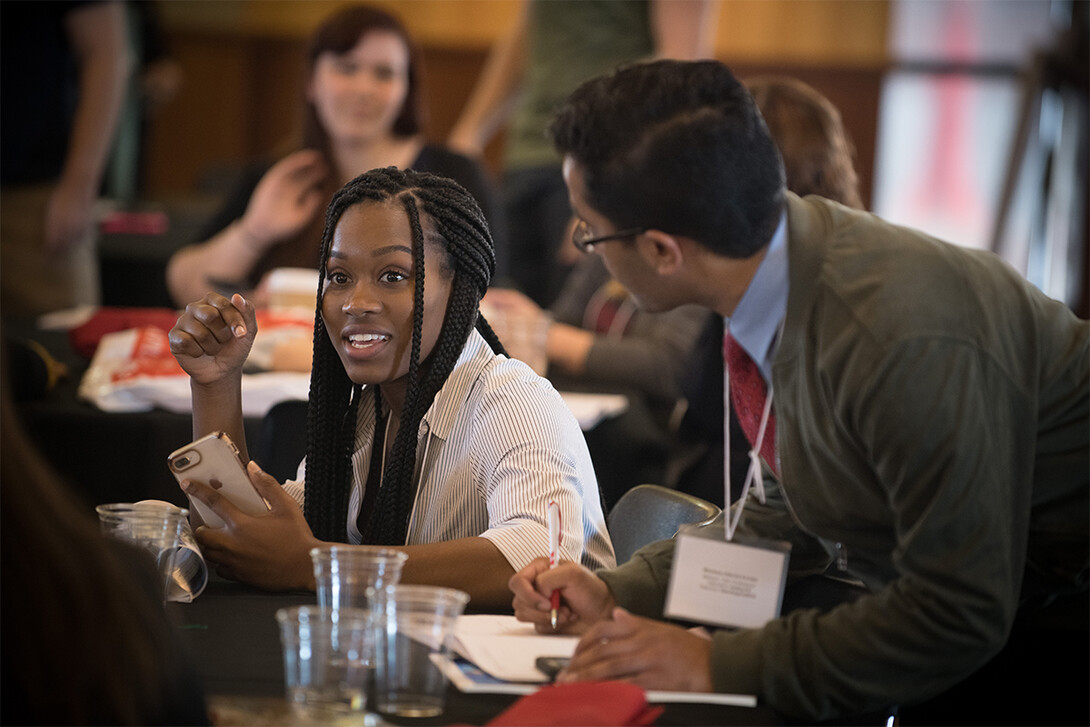
Earlier this month, and a week before the University of Nebraska-Lincoln’s 10th annual Conference for Undergraduate Women in Physical Sciences, Donna Strickland and Frances Arnold won Nobel Prizes.
Strickland became the first woman in 55 years — just the third ever — to win the Nobel in physics. A day later, Arnold became the fifth female winner of the chemistry Nobel — joining the ranks of the 175 male laureates in the field.
By sharing and celebrating female-driven science with 115 undergrads who are visiting Lincoln from as far away as Puerto Rico, the 2018 WoPhyS conference is echoing that Nobel-amplified duality: heartening progress in the face of longstanding inequality.
“There is more and more of a critical mass of these role models whom young women can look to,” said Jocelyn Bosley, part of a six-member committee that organized the Oct. 11-13 conference. “But it doesn’t erase the fact that there are these (imbalanced) numbers and that there is some resistance to acknowledging what discrimination still exists.
“That’s why it’s really important to have a venue like this, where you have so many female students together. People definitely feel like they’re part of something bigger while they’re here. Many of them come with one or two other students from their school, but they always leave knowing so many other students from other schools. I think that’s a key component: fostering that sense of community.”

This year’s conference has 76 undergrads presenting posters on their research, with 14 students also giving research talks to their peers and the faculty in attendance.
“That’s something that most undergrads don’t have on their resumes or CVs,” Bosley said. “I think the other students benefit from those talks at least as much as they do from the keynote addresses. Hearing about the really impressive research that other students are doing, and seeing how poised and effective they are at communicating, is such a great opportunity.”
Keynotes are being delivered by faculty from Nebraska, MIT, the NASA Jet Propulsion Laboratory, Columbia University, the Max Planck Institute for Medical Research, and several other institutions. Though much of that research resides in the camps of physics, chemistry, materials science and engineering, the conference also welcomes students and faculty from other STEM-related fields.
“My feeling is: You’ve got your entire lives to listen to and argue with people who are working in your sub-discipline,” joked Bosley, assistant director of education and outreach with Nebraska’s Materials Research Science and Engineering Center. “What makes this (conference) unique is the interdisciplinary nature of it.”
To air out the often-stuffy atmosphere that permeates many conferences, Bosley has helped infuse each of the past few WoPhyS conferences with motifs borrowed from science fiction. The 2018 treatment? “Doctor Who,” the iconic BBC series that bucked decades of patriarchal precedent by airing its Oct. 7 season premiere with actress Jodie Whittaker in the lead role.
Evening breaks from the 9-to-5 rigors of absorbing and presenting science also help elevate the mood, Bosley said. In years past, undergrads played laser tag or scaled a rock wall at the university’s Outdoor Adventure Center. This time, they’re getting out by heading to an escape room.
“There’s a culture we’ve established with this conference over the years, a good mixture of science and fun, of taking the science seriously but not taking ourselves so seriously,” Bosley said.

The conference has roughly doubled in size since its 2008 inception, Enders said. That’s partly due to the fact that the university covers the costs of registration, lodging and food, making it feasible for undergrads who can rarely afford the expenses and seldom receive departmental funding for conferences.
“I hope we can make sure that this lives on,” he said. “This is an opportunity to not only broadcast science but to showcase Nebraska to other universities and other places where they may not be aware of it.
“Very often, we hear, ‘I didn’t even know Nebraska, and I wasn’t considering it as an option for a graduate program. But now that I’m here and see how nice it is, I’m excited.’ Nebraska has something here that goes beyond science.”







